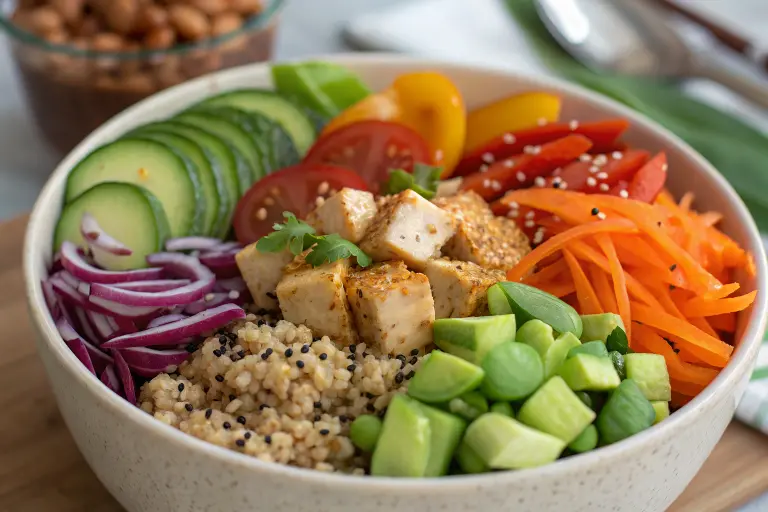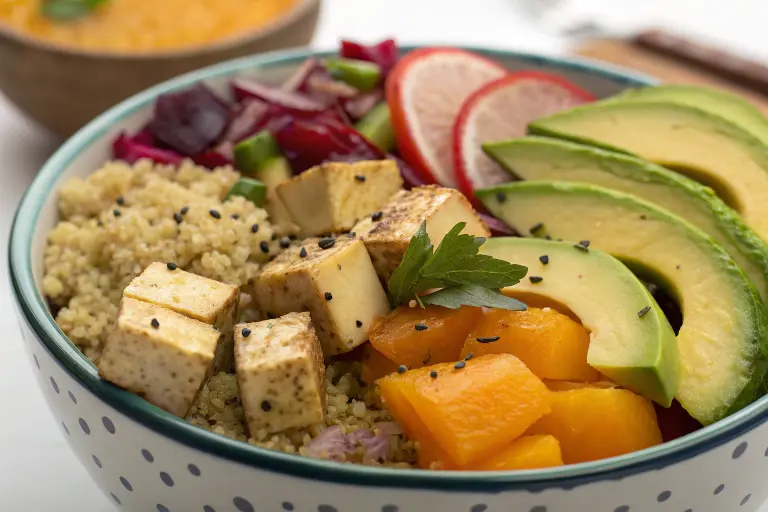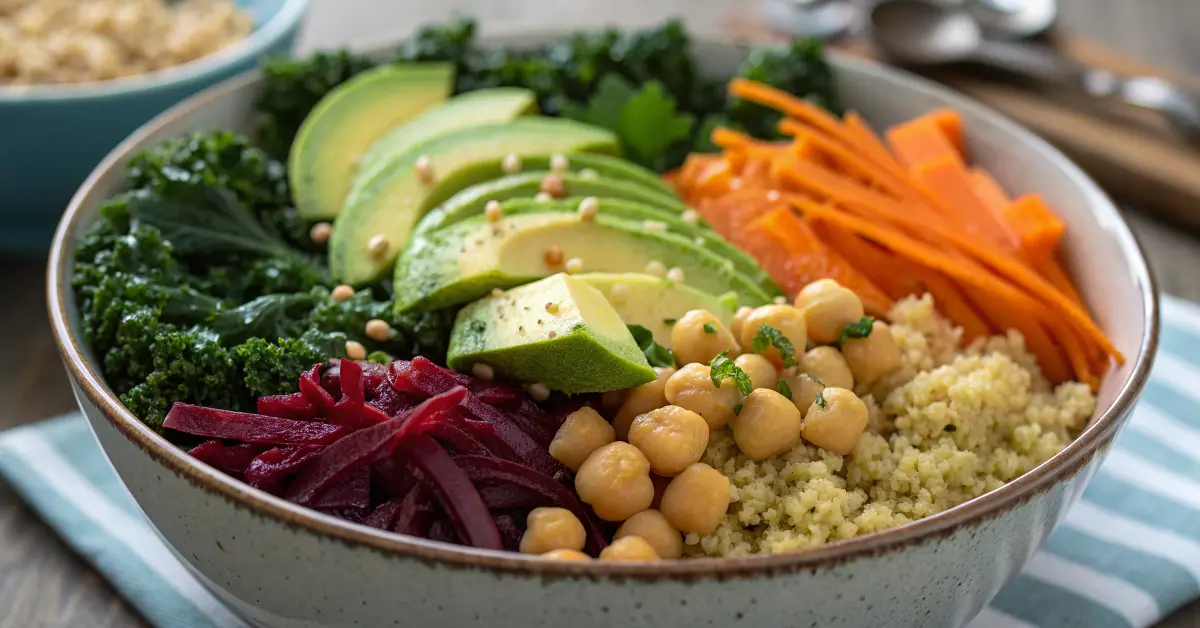A poke bowl has quickly become one of the most sought-after dishes worldwide, capturing the attention of food enthusiasts everywhere. From its humble origins in Hawaii to its rise in popularity across the globe, people are increasingly asking, what defines a poke bowl? This vibrant, customizable dish has redefined the way we think about healthy meals, offering a perfect blend of freshness, flavor, and creativity.
At its core, a poke bowl is a bowl filled with marinated raw fish, served with a variety of toppings over a base of rice or salad greens. But what defines a poke bowl beyond its ingredients? It’s the adaptability and versatility of this dish that makes it so appealing. Whether you’re looking for a protein-packed lunch or a refreshing light dinner, poke bowls offer endless options to cater to your dietary needs and taste preferences. In this article, we’ll dive deeper into what defines a poke bowl, discovering its rich history, key components, and why it has become a global sensation.
The Growing Popularity of Poke Bowls
The poke bowl is not just a trend but a reflection of the increasing interest in fresh, healthy, and customizable food options. With roots in Hawaii, the dish has expanded beyond the islands to become a favorite in many parts of the world. But to truly understand the allure of poke bowls, we must first dive into what defines this dish.
What Defines a Poke Bowl? A Quick Overview
A poke bowl is essentially a bowl filled with raw, marinated fish, usually served over a base of rice or salad greens. However, its versatility allows for many variations. From the ingredients to the sauces, each poke bowl can be tailored to personal preferences. To fully appreciate what defines a poke bowl, let’s break down its key components.
The Origins of Poke Bowls
Before diving into the specifics of a poke bowl, it’s important to understand its cultural significance. Poke (pronounced poh-keh) is a Hawaiian word meaning “to slice” or “to cut crosswise into pieces.” Traditionally, poke referred to raw, seasoned fish, often tuna that was served as a snack or appetizer.
Traditional Hawaiian Poke
In its most authentic form, Hawaiian poke is made with fresh fish like tuna, seasoned with ingredients such as sea salt, sesame oil, and seaweed. This dish was a staple for native Hawaiians, often paired with rice or eaten on its own. But over time, poke began evolving into the more structured and diverse version we know today.
Key Ingredients That Define a Poke Bowl
The main attraction of a poke bowl is its ingredients, which combine fresh flavors with endless customization options. Here are the basic components that make up a traditional poke bowl:
1. Fresh Fish (The Heart of the Dish)
The cornerstone of a poke bowl is raw fish. While tuna is the most common choice, other options like salmon, octopus, or shrimp are often used.
- Tuna: The most traditional fish, usually ahi tuna.
- Salmon: Rich in flavor and healthy fats.
- Other options: Shrimp, scallops, or even tofu for a plant-based version.
2. Base
Poke bowls are typically served over a base of:
- White rice: The classic choice.
- Brown rice: A healthier, fiber-rich alternative.
- Salad greens: A refreshing choice for those preferring a lighter option.
3. Toppings and Vegetables
The toppings add texture, flavor, and color to the poke bowl. Some popular options include:
- Avocado: Adds creaminess and richness.
- Cucumber: Fresh and crunchy.
- Seaweed salad: A traditional component.
- Edamame: A protein-packed addition.
4. Sauces and Marinades
The sauce is what brings the poke bowl together. Common choices include:
- Soy sauce: A savory, salty base for marination.
- Ponzu sauce: A citrusy alternative.
- Spicy mayo: For a creamy, spicy kick.

What Defines a Poke Bowl? The Customization Factor
One of the main reasons poke bowls have become so popular is their incredible level of customization. Unlike many other dishes, poke bowls offer a unique experience where you can personalize every element to suit your tastes, dietary restrictions, or even your mood that day. Whether you’re craving something light and fresh or rich and savory, a poke bowl allows you to assemble the perfect meal. This flexibility is what sets it apart from more traditional, fixed-menu dishes.
The appeal of a poke bowl lies in the fact that you can design your own combination of ingredients based on what you enjoy most. Moreover, it provides an opportunity to explore new flavors and textures, making each bowl a unique creation. Here’s a more detailed step-by-step guide to building the perfect poke bowl:
Build Your Own Poke Bowl: A Step-by-Step Guide
Creating your ideal poke bowl is an easy, fun, and satisfying process. Here’s how you can design your poke bowl from scratch, step by step:
1. Choose Your Base: The Foundation of Your Bowl
The base of your poke bowl is the foundation upon which everything else will be built. You can opt for a carbohydrate-rich base or a lighter alternative, depending on your preference:
- Rice: Typically, white rice or brown rice is used, offering a satisfying, hearty texture. Brown rice is a healthier option, providing more fiber and a nuttier taste.
- Salad Greens: If you’re looking for a lighter, low-carb alternative, fresh greens like mixed lettuce, arugula, or kale can be used as a base. This option gives your poke bowl a refreshing, crisp texture.
- Quinoa: For those seeking a gluten-free or protein-packed option, quinoa can also serve as a nutritious base. It adds a slightly earthy flavor and complements the fish beautifully.
- Noodles: Some poke enthusiasts choose to use noodles, like soba or rice noodles, for a more filling, comforting bowl.
2. Pick Your Protein: The Heart of the Bowl
The protein in your poke bowl is what adds substance and flavor. While fish is traditionally the go-to choice, there are several options to suit various dietary preferences:
- Tuna: A classic choice, often used in poke bowls, particularly ahi tuna. It’s light, tender, and slightly sweet, making it a favorite.
- Salmon: Rich in omega-3 fatty acids, salmon adds a creamy texture and buttery flavor to your poke bowl.
- Shrimp: For those who prefer shellfish, shrimp is another great choice. It adds a sweet, briny taste and pairs wonderfully with the fresh ingredients.
- Tofu: A fantastic plant-based alternative, tofu absorbs the flavors of the marinade and adds a soft, creamy texture. It’s perfect for vegetarians and vegans.
- Chicken: For those looking for a non-seafood option, grilled or marinated chicken is a hearty protein alternative that pairs well with the bold flavors of the toppings.
- Octopus or Scallops: For a more adventurous poke experience, octopus or scallops can bring a unique texture and flavor to your bowl.
3. Select Your Toppings: Texture and Flavor Variations
The toppings you choose are what add color, texture, and extra bursts of flavor to your poke bowl. Here are some common and exciting topping options:
- Avocado: Sliced avocado is a popular topping due to its creamy texture and ability to balance out the bold flavors of the fish and sauce.
- Cucumber: Thinly sliced cucumber adds a fresh, crunchy element, helping to lighten the overall dish.
- Radishes: Crisp and slightly spicy radishes bring a zesty, refreshing crunch that pairs beautifully with the soft fish.
- Edamame: Edamame is rich in protein and fiber, making it a popular choice for adding a plant-based element to your poke bowl.
- Pickled Ginger: This tangy, slightly sweet garnish brings a bold, sharp flavor that cuts through the richness of the fish and sauces.
- Seaweed Salad: Seaweed is a classic topping, offering a salty, umami flavor that boost the poke experience.
- Carrot Ribbons: Thin strips of carrot provide a colorful and crunchy contrast to the softer elements in the bowl.
4. Add Sauce: The Flavoring That Brings It All Together
The right sauce can elevate your poke bowl by tying all the ingredients together with an extra layer of flavor. These sauces vary from savory to spicy, depending on what kind of flavor profile you prefer:
- Soy Sauce: The most traditional poke bowl sauce, soy sauce provides a salty and umami flavor. It can be used on its own or mixed with other ingredients.
- Ponzu Sauce: Ponzu is a citrus-based sauce, offering a refreshing tang that pairs wonderfully with the fish and vegetables.
- Spicy Mayo: A combination of mayonnaise and chili paste, spicy mayo adds a creamy and mildly spicy kick. It’s a favorite for those who enjoy a little heat.
- Wasabi Soy: For those who love a touch of heat, wasabi soy is a great option. The wasabi adds a sharp, spicy bite that complements the fish’s delicate flavors.
- Ginger-Sesame Dressing: A ginger-sesame dressing can bring a savory, aromatic flavor that enhances the overall experience.
5. Finish with Extra Touches: Garnishes to Add Personality
The final step is to add a finishing touch that gives your poke bowl an extra burst of flavor, crunch, or even visual appeal. Here are some extra ingredients you can add to your poke bowl:
- Sesame Seeds: A sprinkle of sesame seeds adds both texture and a nutty flavor.
- Crispy Onions: Crispy onions offer a crunchy contrast to the softness of the fish and rice.
- Furikake: This Japanese seasoning blend, typically made of seaweed, sesame seeds, and fish flakes, adds a delightful umami punch.
- Chili Flakes: A pinch of chili flakes can add a spicy kick if you like a little heat in your poke bowl.
- Microgreens: Fresh microgreens like cilantro or radish sprouts can bring a burst of freshness and visual appeal.
- Crispy Garlic Chips: Garlic chips offer a rich, toasty flavor and crunchy texture that’s perfect for those who enjoy savory additions.
Global Influence: How Poke Bowls Have Evolved
While the poke bowl originated in Hawaii, it has quickly gained popularity worldwide. Many restaurants and food trucks have added their twist to the dish, incorporating local ingredients and flavors. But despite the variations, the fundamental question remains: What defines a poke bowl?
Fusion Variations
Around the globe, poke bowls have been adapted to suit various tastes. Some regions have experimented with:
- Asian flavors: Including ingredients like kimchi or sriracha sauce.
- Mexican influence: Adding jalapeños, cilantro, and lime.
- Mediterranean-inspired poke bowls: Featuring feta cheese, olives, and tzatziki.
Health Benefits of Poke Bowls
Not only are poke bowls delicious, but they’re also known for their health benefits. Since they’re typically made with fresh ingredients like fish, vegetables, and whole grains, poke bowls are a nutrient-dense meal. They are:
- Rich in Omega-3s: Especially with fish like tuna and salmon.
- High in protein: Thanks to the fish or tofu.
- Low in calories: Depending on the ingredients, poke bowls can be a light yet filling meal.
Popular Poke Bowl Chains
In recent years, poke bowl chains have popped up everywhere, making this dish more accessible than ever. Some of the most well-known chains include:
- Pokéworks: Known for offering a variety of fish options and toppings.
- Sweetfin Poke: Focuses on healthy, sustainable ingredients.
- Poke Bar: Allows customers to fully customize their poke bowls.
These chains have played a significant role in popularizing poke bowls, making it easier for people to enjoy this Hawaiian dish in cities worldwide.

FAQs: Everything You Need to Know About Poke Bowls
❓What defines a poke bowl?
A poke bowl is a Hawaiian dish consisting of raw, marinated fish served over a base like rice or salad, with various toppings and sauces added for flavor and texture.
❓Is poke bowl healthy?
Yes, poke bowls can be very healthy, as they’re often made with fresh fish, vegetables, and nutrient-dense ingredients like avocado and edamame.
❓Can you make a poke bowl vegetarian?
Absolutely! You can replace the fish with plant-based options like tofu or tempeh, and still enjoy the delicious combination of fresh toppings and sauces.
❓What kind of fish is used in poke bowls?
The most common fish used in poke bowls are tuna and salmon, but shrimp, octopus, and even tofu are popular alternatives.
❓What sauce is typically used in poke bowls?
Popular sauces for poke bowls include soy sauce, ponzu, spicy mayo, and ginger-sesame dressing. These add different levels of flavor, from savory to tangy or spicy.
Conclusion: Why the Poke Bowl Continues to Win Hearts
What defines a poke bowl? At its core, a poke bowl is a celebration of fresh, customizable ingredients, making it an ideal meal for anyone seeking a delicious yet healthy option. Whether you’re enjoying it for lunch, dinner, or a quick snack, the poke bowl offers endless possibilities with its combination of fresh fish, vibrant toppings, and flavorful sauces. It’s no wonder that poke bowls have gained such widespread popularity around the world, transforming from a traditional Hawaiian dish to a global food trend.
Beyond just being a food craze, poke bowls are an embodiment of what modern dining is all about: personalization. With countless ways to mix and match ingredients, sauces, and toppings, every poke bowl can be tailored to suit your exact tastes, whether you prefer a light and fresh option or something a bit more indulgent. And as the world of poke continues to evolve, there’s no limit to the creativity you can bring to your bowl.
If you’re looking to try making a poke bowl at home, we’ve got you covered with a range of delicious recipes. For example, check out our Salmon Poke Bowl Recipe, which combines fresh ingredients and a tangy marinade to create the perfect meal. Or, if you’re in the mood for a more customizable version, try our Poke Bowl Recipe to create your own poke bowl masterpiece.
For more inspiration, tips, and recipes from the world of poke and other delicious dishes, be sure to visit Chaynez Recipes. With a variety of recipes and cooking ideas, you can discover more ways to enjoy fresh, healthy meals at home.






